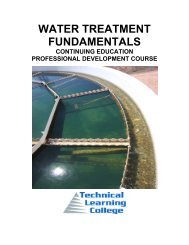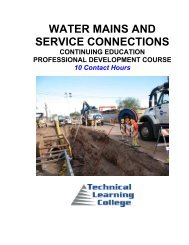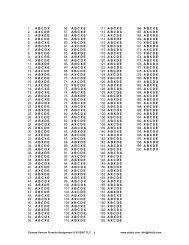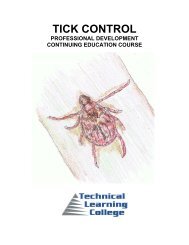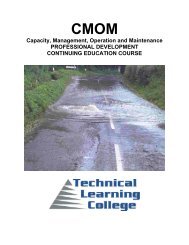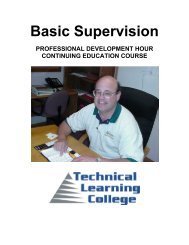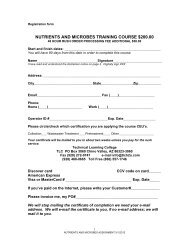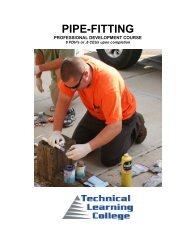Pump Primer 1 $100 - 8 Hours - Technical Learning College
Pump Primer 1 $100 - 8 Hours - Technical Learning College
Pump Primer 1 $100 - 8 Hours - Technical Learning College
Create successful ePaper yourself
Turn your PDF publications into a flip-book with our unique Google optimized e-Paper software.
The three pumps above are typically used for air, but would be equally applicable to liquids. The<br />
Roots blower has no valves, their place taken by the sliding contact between the rotors and the<br />
housing. The Roots blower can either exhaust a receiver or provide air under moderate<br />
pressure, in large volumes. The Bellows is a very old device, requiring no accurate machining.<br />
The single valve is in one or both sides of the expandable chamber. Another valve can be<br />
placed at the nozzle if required. The valve can be a piece of soft leather held close to holes in<br />
the chamber. The Bicycle pump uses the valve on the valve stem of the tire or inner tube to hold<br />
pressure in the tire. The piston, which is attached to the discharge tube, has a flexible seal that<br />
seals when the cylinder is moved to compress the air, but allows air to pass when the<br />
movement is reversed.<br />
Diaphragm and vane pumps are not shown, but they act the same way by varying the volume of<br />
a chamber, and directing the flow with check valves.<br />
Fluid Properties<br />
The properties of the fluids being pumped can significantly affect the choice of pump. Key<br />
considerations include:<br />
• Acidity/alkalinity (pH) and chemical composition. Corrosive and acidic fluids can degrade<br />
pumps, and should be considered when selecting pump materials.<br />
<strong>Pump</strong> <strong>Primer</strong> I Course © 12/1/2012 (866) 557-1746 www.ABCTLC.com<br />
48



